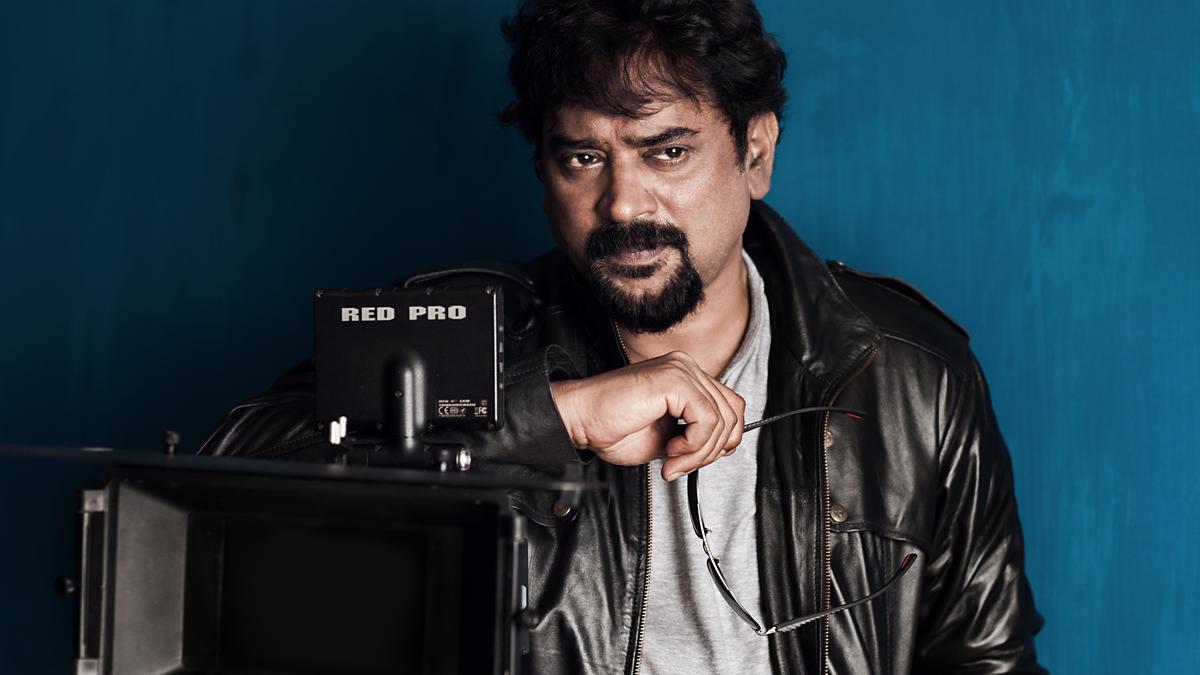
In a world that often hurries past the subtle interplay of lights and shadows, there exists a storyteller, Santosh Sivan, who crafts narratives with a paintbrush infused with the hues of his childhood memories. Born in Thiruvananthapuram, the monsoon skies of his native land have left an indelible imprint on his filmmaking canvas. The house of his ancestors, with its attic light shafts and central courtyard, seems to live and breathe within the frames of his films, reminiscent of the sun-dappled scenes in Perumthachan, his 1990 directorial venture.
Now at the age of 60, Sivan’s tale-telling prowess has only sharpened, his life’s palette enriched with every image and film intricately linked to a reminiscence. The narrative of Asoka (2001), the majesty and moral struggle of the emperor Chakravarti Ashoka, can be traced back to a classroom anecdote that etched itself in the young Sivan’s mind—an echo of his teacher’s words that maturity begets non-violence, something the older Sivan recognized in Asoka’s epiphany.
In a significant nod to his exceptional contributions to cinema, Sivan is set to receive the illustrious Pierre Angénieux Tribute at the 77th Cannes Film Festival. This award, an embodiment of cinematic excellence, celebrates the mastery of Sivan, a five-time national award winner for best cinematography and the recipient of numerous other accolades. The tribute brings with it not only the acknowledgment of his peers but also the tangible signifier of the craft—an Angénieux zoom lens engraved with his name. The festival will also see him sharing his insights at a masterclass scheduled for May 23.
A graduate from the Film and Television Institute of India (FTII), Sivan stepped into the world of Indian cinema with the seminal Roja (1992), helmed by Mani Ratnam, after a fortuitous encounter when Ratnam chanced upon Sivan’s work in the film Raakh. Their ensuing cinematic partnership, starting with Thalapathy (1991), yielded a trilogy that showcased Sivan’s remarkable versatility with the camera.
Siva Ananth, a close collaborator and executive producer at Ratnam’s Madras Talkies, lauds Sivan’s unique ability to infuse strength into his imagery, perfectly synchronizing with the soul of the characters portrayed. The song ‘Narumugaye’ from Iruvar (1997) stands testimony to this, where Sivan’s lens captures fleeting romantic glances with a vividness that transcends mere visuals.
Sivan’s cinematic oeuvre spans movement-laden tales like Dil Se.. (1998) to representations of political dynamics in Iruvar. His foray into both mainstream and independent cinema brought him national awards and proved that commercial films could indeed be a canvas for artistic expression. What might seem like a glitzy backdrop to most becomes for Sivan a stage to showcase his vision—and why, even after decades, his involvement in a project courts the same fervor as the presence of a superstar.
Although his journey has seen the crests synonymous with accolades, it is the strength of the story that compels Sivan. His recent expedition to Kashmir to direct a feature on the 16th-century poet Habba Khatoon, and the bittersweet encounter with production issues in the malayalam film Jack N Jill (2022), highlights Sivan’s resilience and the boxing ring mentality necessary for filmmakers.
Renowned for his grounding in documentary filmmaking, Sivan’s transition to feature films was seamless, notes his colleague, cinematographer-filmmaker Rajiv Menon. Menon praises The Terrorist (1998) for its uniquely affecting visual language—a small-budget film that resonated so profoundly that it earned Sivan a place in the American Society of Cinematographers (ASC) as its first member from the Asia-Pacific region.
Despite his global recognition, Sivan remains deeply rooted in Indian cinema, believing that his stories are meant to bloom where they were sown. Anchored by family and home, Sivan’s craft isn’t swayed by the allure of Hollywood. His ASC accolade, a testament to his authentic approach, stands alongside his travels and experiences as the bedrock of his visual storytelling.
Even as technology revolutionizes the field, Sivan asserts that it is the practitioner, not the tool, that wields the art. With widespread access to image creation, he draws an analogy to language; not everyone who reads and writes is a poet, much like how not every photograph develops into a work of art. In Sivan’s world, it’s the act of creation that sustains, not just the accessibility of technology.
As Sivan prepares to embrace the honour and share his visions at Cannes, his journey from the nostalgic landscapes of his childhood to the panoramic spectacle of international recognition, is a testament to the timelessness of a well-told story—one that continues to evoke, captivate, and inspire across generations.

